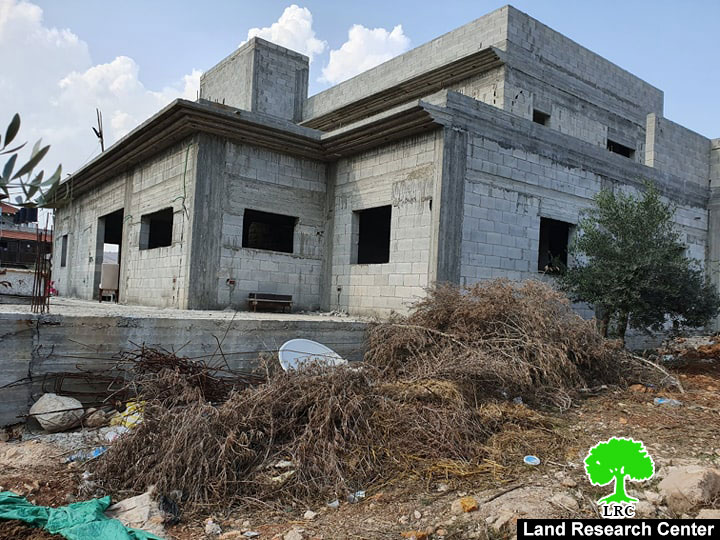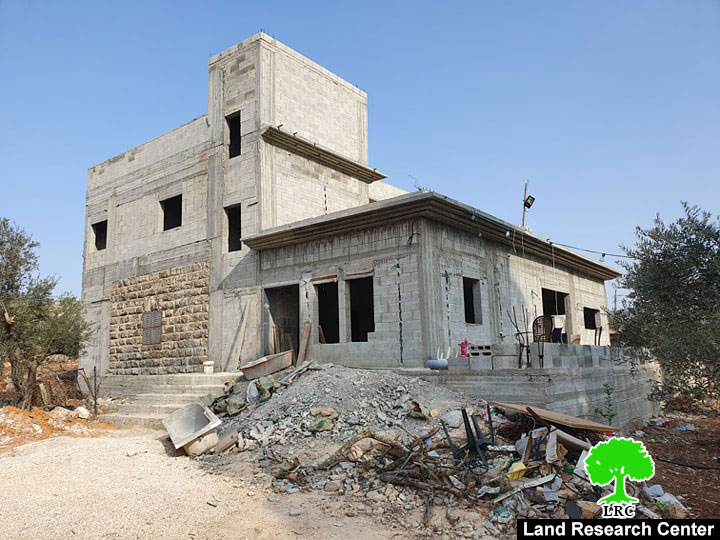2019-07-17
إخطار بوقف البناء لمسكن عائلة دراوشة في قرية عورتا / محافظة نابلس
الانتهاك: إخطار بوقف البناء.
الموقع: قرية عورتا / محافظة نابلس.
تاريخ الانتهاك: 17/07/2019.
الجهة المعتدية: لجنة التنظيم والبناء التابعة لما تسمى بالإدارة المدنية الإسرائيلية.
الجهة المتضررة: المواطن أحمد فوزان أحمد دراوشة.
تفاصيل الانتهاك:
في صباح يوم الأربعاء الموافق 17 تموز 2019 حوالي الساعة الحادية عشرة اقتحمت قوات جيش الاحتلال الإسرائيلي برفقة ما يسمى ضابط البناء والتنظيم قرية عورتا الواقعة جنوب شرق مدينة نابلس، حيث سلم الاحتلال المواطن أحمد فوزان أحمد دراوشة إخطاراً يتضمن قراراً بوقف البناء لمسكنه المقام على أرضه في موقع المزرعة شمال القرية والمكون من طابقين حيث تبلغ مساحة الطابق الأول 200م2 ومساحة الطابق الثاني 120م2 وتقطنه أسرته البالغة 4 أفراد.
وأفاد المواطن المتضرر دراوشة "39 عاماً" لباحث مركز أبحاث الأراضي بالتالي:
” يقع مسكني في الجهة الشمالية من القرية وفي المنطقة المصنفة "ج" حسب اتفاق اوسلو، وعلى مسافة 200 متر من منازل القرية ومقام على ارض مساحتها 2 دونم مزروعة بأشجار الزيتون، وعند اقتحام قوات الاحتلال للقرية وتسليمي الأمر العسكري توجهت على الفور للمجلس القروي والذي بدوره أرشدني بعمل اللازم لرفع قضية لتجميد الأمر العسكري من خلال تحضير الملف القانوني، حيث تم رفع قضية من خلال مركز القدس للمساعدات القانونية".
قرية عورتا[1]:
تقع قرية عورتا على بعد 7 كم من الجهة الجنوبية من مدينة نابلس ويحدها من الشمال روجيب وبيت فوريك ومن الغرب بورين وحوارة ومن الشرق عقربا وبيت فوريك ومن الجنوب بيتا و أودلا
يبلغ عدد سكانها (7054) نسمة حتى عام (2017) م.
تبلغ مساحتها الإجمالية 13,448 دونم، منها 653 دونم عبارة عن مسطح بناء لقرية الجلمة.
وصادر الاحتلال من أراضيها ما مساحته (2697) دونم وفيما يلي التوضيح:
1- نهبت المستعمرات من أراضي القرية مساحة ( 2409) دونم ، وهي:
اسم المستعمرة | سنة التأسيس | مساحة الأراضي المصادرة / دونم | عدد المستعمرين 2018 | ملاحظات |
إيتمار | 1984 | 2,409 | 1224 | المساحة الكلية لإيتمار 3,098 دونم |
2- نهبت الطريق الالتفافية رقم 555 ما مساحته ( 100) دونم.
4- نهبت المعسكرات الإسرائيلية المقامة على أراضي القرية ما مساحته ( 188 ) دونم.
تصنيف الأراضي حسب اتفاق أوسلو للقرية:
- مناطق مصنفة B ( 4,822 ) دونم.
- مناطق مصنفة C ( 8,626 ) دونم.
[1] المصدر: وحدة نظم المعلومات الجغرافية – مركز أبحاث الأراضي.

تم إعداد هذه النشرة بمساعدة من الاتحاد الأوروبي





